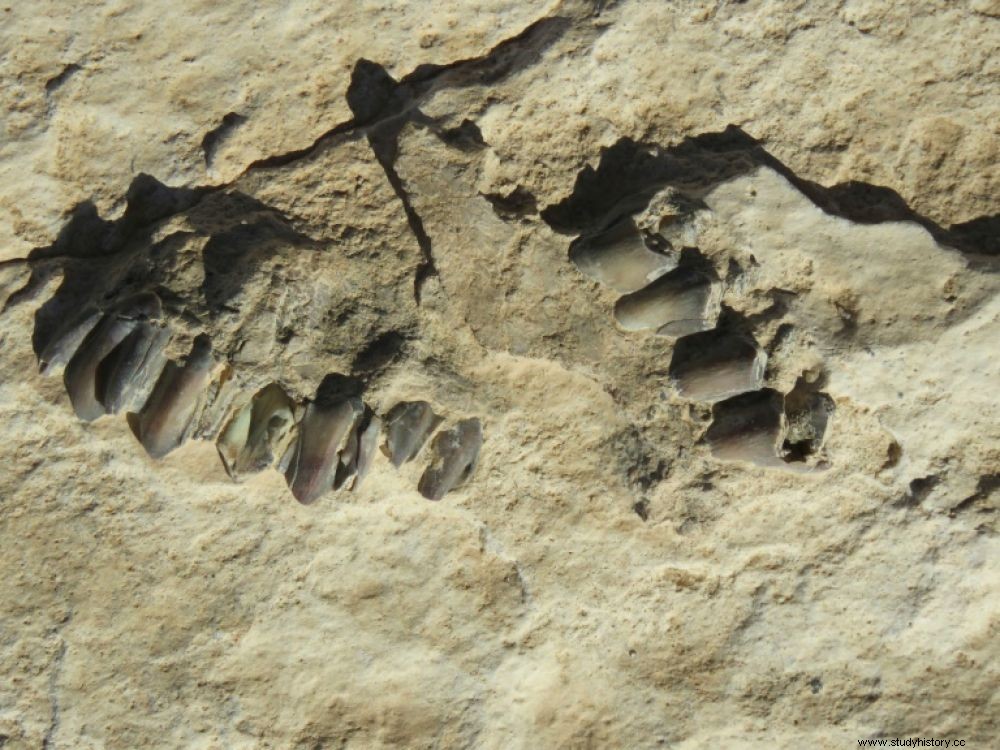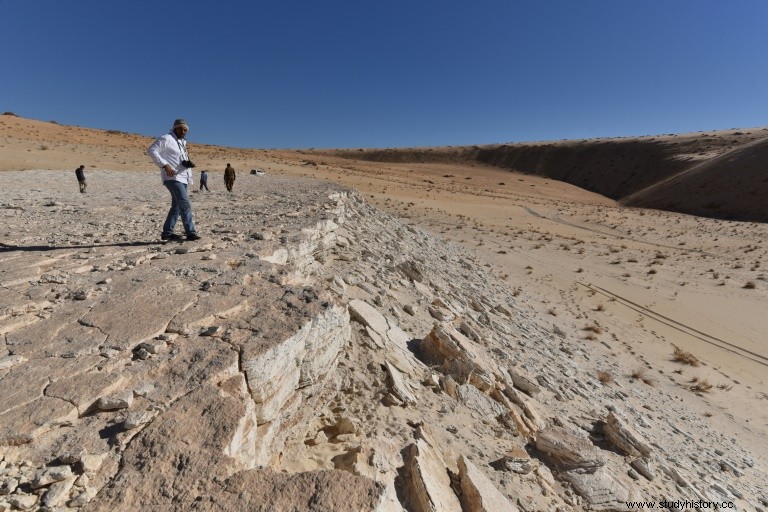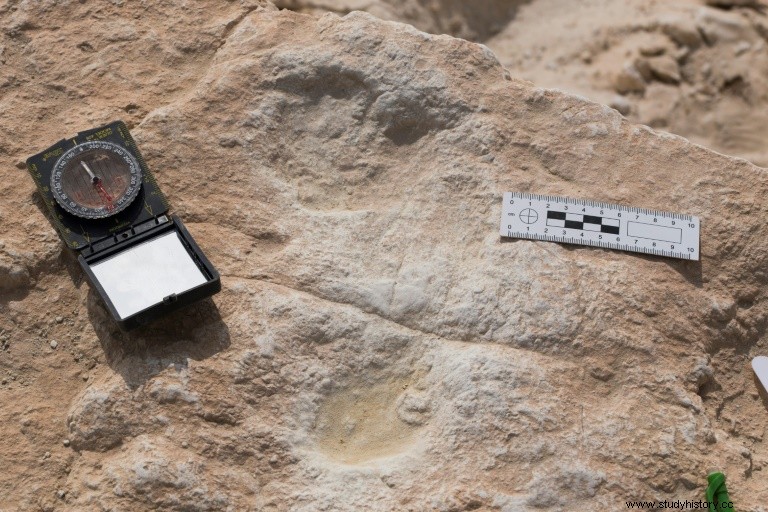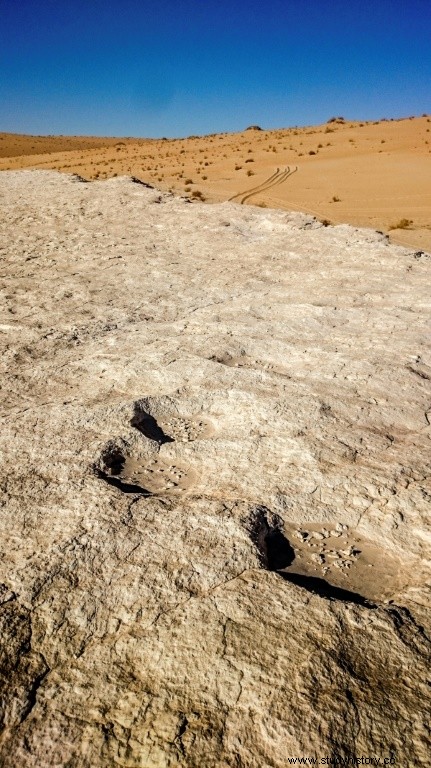The Arabian Peninsula is now made up of large, uninviting deserts, but scientists have for a decade established that it was once greener and wetter.

Undated photo of animal fossils on the surface of an ancient lake called "Alathar", in Saudi Arabia.
120,000 years ago, in modern-day northern Saudi Arabia, a group of Homo sapiens, humans identical to ourselves, stopped by a lake also frequented by camels, buffaloes and elephants larger than current species. Visitors didn't stay long, the lake being just one stop on a long journey.
A scene reconstructed by researchers
The scene was reconstructed by researchers in a study published Thursday, September 17, 2020 in the journal Science Advances , after the discovery of ancient human and animal footprints in the Nefud desert, new clues to the paths taken by our distant ancestors after leaving Africa.
The Arabian Peninsula is now made up of large, uninviting deserts, but scientists have for a decade established that it was once greener and wetter. "There were times in the past when the deserts that dominate the interior of the peninsula turned into large grasslands, with the presence of permanent lakes and rivers", told AFP a co-author of the study, Richard Clark-Wilson, of the English university Royal Holloway.

Undated photo of a view of the surface of an ancient lake called "Alathar", in Saudi Arabia. Credits:Badar ZAHRANI/AFP/Archives - Badar ZAHRANI
"It seems that these people were passing by the lake to get water and find food"
The first author of the study, Mathew Stewart, from the Max Planck Institute in Germany, says he discovered the footprints during his doctorate in 2017, after the erosion of sediments at the site of an ancient lake called "Alathar" ( "the trace", in Arabic).
"Footprints are a unique form of fossil evidence that represent a moment in time, on the order of hours or days. You don't have that resolution with other records" , he said.
The prints were dated using a technique called optical stimulated luminescence, which involves beaming light at the quartz grains and measuring the energy emitted by them.

Undated photo of the first human footprint found on the surface of an ancient lake called 'Alathar' in Saudi Arabia. Credits:Klint JANULIS/AFP/Archives - Klint Janulis
Of the hundreds of tracks discovered, seven have been confirmed as belonging to hominids, four of which belong to two or three individuals traveling together, given their common orientation, the distance between them and the differences in size.
For the researchers, the stature and mass of the humans indicate that they were modern humans and not Neanderthals, as the latter were not present in this region at the time anyway.
The fact that no stone tools have been discovered has led researchers to rule out that the site was permanently inhabited. "It seems that these people passed by the lake to get water and find food, at the same time as the animals" , says Mathew Stewart.

Undated photo of elephant tracks on the surface of an ancient lake called 'Alathar' in Saudi Arabia. Credits:Paul BREEZE/AFP/Archives - Paul BREEZE
The presence of elephants suggests that the area was abundant in vegetation and water. Scientists also unearthed 233 fossils on site, supporting the hypothesis that carnivorous species came to hunt herbivores around the lake, as they do today in the African savannas.
It has been established that humans colonized Eurasia through Greece and the Levant, exploiting the resources of the coastlines. This new work indicates that "inland routes, following lakes and rivers, may have been particularly important" , according to Mathew Stewart.
"The presence of large animals such as elephants and hippos, combined with the vast grasslands and abundant water resources, may have made northern Arabia very attractive to humans between Africa and the Eurasia" , summarizes another co-author, Michael Petraglia, of Max Planck.
